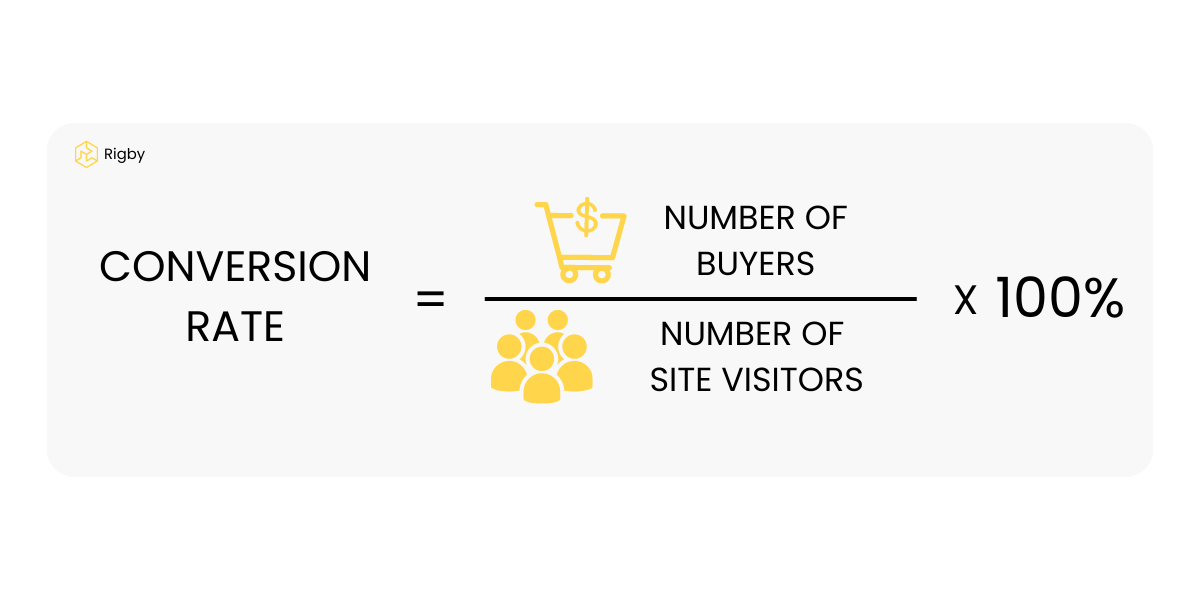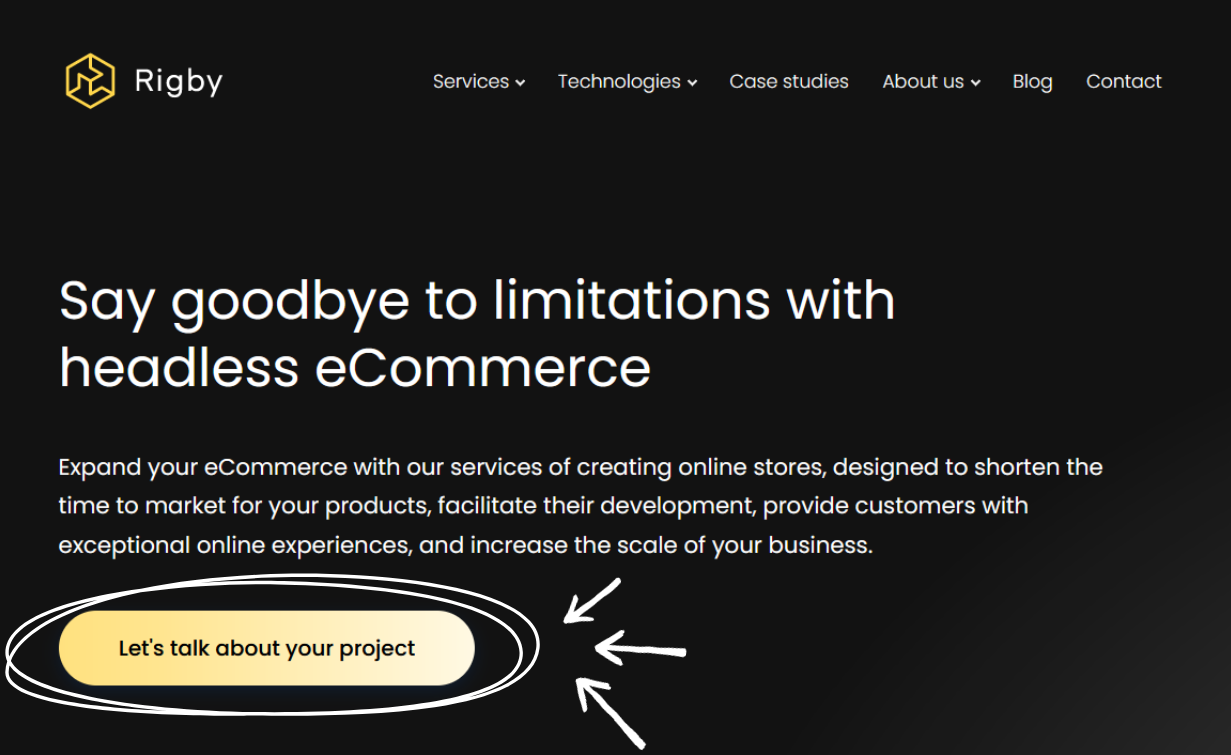How a Good Frontend Can Impact the Growth of Conversion in Your eCommerce?
By Karolina Jakubowicz
By Karolina Jakubowicz

Frontend, which is the visual layer of a website, plays a crucial role in the success of online stores. Nowadays, when competition in eCommerce is very high, customers have high expectations and demands. A clear and intuitive interface, fast page loading speed, and appealing design are just a few elements that impact user experience and purchasing decisions. In this article, you will discover how a good quality frontend can boost the conversion rate on your website and the key elements worth considering to use its potential.
Frontend refers to the user-visible layer, which is what we see on a website. These are all elements that users can view, including page layout, images, buttons, animations, and forms. Frontend also comprises interactive elements that enable users to navigate through the site and perform actions such as adding products to their cart or finalizing purchases. It has a huge meaning in an online store, as it forms users' first impressions. Appearance, content readability, page speed, and ease of navigation significantly influence whether visitors choose to remain on the site and continue shopping.
In eCommerce, conversion refers to the percentage of visitors who become your customers. To calculate it, you can use the formula below. The average conversion rate, which varies across industries, ranges from 2% to 5%.

Numerous factors affect the conversion rate, including page speed, offer attractiveness, element placement, store trustworthiness, product availability and customer service quality. Nevertheless, frontend holds pivotal importance as it shapes users' impressions.
Frontend influences conversion by creating a positive user experience (UX). A solid UX contains well-designed pages, applications, and stores that effectively guide users through the purchasing process. This factor encourages visitors to spend more time on the site, explore the store's offerings, and ultimately make purchases. Key characteristics of excellent UX include:
Addressing Customer Needs: When creating a website, application, or store, focus on understanding and fulfilling users' needs. What proves useful and valuable to customers should be prioritized.
Intuitiveness and Clarity: Interfaces should be easy to understand without unnecessary elements and complications. Users should intuitively find what they are looking for without having to go through complicated instructions.
User-Centric Approach: Users should feel valued and appreciated when interacting with the website or application. Balanced design that considers user perspective helps build customer trust in the brand.
The UX's golden rule, "Don’t make me think," pertains to minimizing the cognitive effort demanding from during interface interactions. Actions, functionalities, and vital information should be self-evident to users.
Page loading speed has a huge impact on conversion. Long loading time can discourage users and make them leave the site quickly. Therefore, optimizing page loading speed by reducing image sizes, compressing CSS and JavaScript files, and using caching is essential. Check out our article about optimizing eCommerce speed to learn more!
An unclear interface can lead to user frustration and site abandonment. When designing your online store's frontend, prioritize clear layouts, easy navigation, and a transparent design.
However, you should think carefully about changing the design and user interface. Why? Radical changes might frustrate customers accustomed to your store's previous appearance, causing them to swiftly exit due to feeling disoriented. You will get the opposite effect to the intended one, leading to decreased page views and conversions.
You should introduce all changes step by step and use A/B testing. Only if the test results show that the change increases your conversion - enter it.
CTAs encourage users to perform desired actions, such as adding products to their cart, subscribing to newsletters, or placing orders. Clear and personalized CTAs can significantly boost conversion.

Personalization is a key eCommerce trend that allows you to customize content and offers to individual user preferences and behaviors.
User experience research, analysis of user behaviors, and purchase history can lead to creating personalized recommendations and offers. However, achieving this effect necessitates the use of advanced tools like Algolia or Edrone. These tools are based on machine learning, which, knowing the preferences of a particular user, adapts the offer to them. What is more, personalization can involve displaying distinct interfaces based on language or country. Employing persuasion techniques such as time-limited offers, satisfaction guarantees, and showcasing customer reviews and feedback can be effective.
In that, the users receive content that interests them, which increases the chances of purchase and loyalty to the store.
A complicated purchase and payment process can result in cart abandonment. Simplifying and intuitive purchasing processes, minimizing steps to a minimum, is crucial. Additionally, offering various payment options like credit cards, PayPal, or mobile payments ensure customers' shopping comfort. Adding several popular payment gateways provides users with more choices.
The same logic applies to order delivery. Users may prefer certain delivery companies or avoid specific local ones. Offering a wide range of delivery choices makes customers more likely to complete purchases.
Simplification of the purchasing and payment process will increase the willingness of customers to make a purchase.
Shopping via mobile devices is becoming more and more popular. More people are using smartphones and tablets to browse store offerings and make purchases. The share of global internet traffic generated by mobile phones has significantly increased over the past decade. If we rewind to 2012, this portion accounted for a mere 10.88%. As of 2023, the average stands at 56.86% (Source). Responsiveness, the ability to adapt to various screen sizes, is crucial in improving conversion.
A/B testing is a tool for comparing two different versions of a page to determine which performs better in terms of conversion. It involves simultaneously presenting two versions to different user groups and analyzing which version brought better results. A/B testing precisely reveals which frontend elements have the most significant impact on conversion. You can test various CTAs, page layouts, colors, or graphic elements to uncover optimal solutions for your store.
Quality control of the frontend is essential to ensure optimal user experiences. Reviewing and testing the store page for the above-mentioned aspects helps identify areas for improvement. Continuous improvment of the frontend is extremely important, as visitor trends and preferences evolve swiftly. Ensuring the quality and performance of the site helps maintain a competitive edge and, most importantly, preserves customer satisfaction.
Regularly monitoring the frontend's performance is paramount. Several tools can assist in analyzing and evaluating its quality. Here are examples of a few:
Google Analytics provides free tools for analyzing your company's data in one place. They offer insights into user behavior, including time spent on the site, conversion rates, and navigation paths.
To assess the speed of the website, it is worth using tools such as Google PageSpeed Insights or GTmetrix. Moreover, these tools offer practical advice and suggestions for optimizing your website. Discover more about their operations in our article on the best tools and methods for speeding your website. [link]
Hotjar is an analytical platform that collects information about user behavior on your site. It records visitors' paths, logs click locations, and tracks cursor movement. Naturally, it anonymizes customers' personal data.
However, the tool that stands out the most is the heatmap. Through it, you can get informations of the popularity of different site sections, better understanding which areas engage users and which are less appealing. Moreover, this tool identifies areas requiring improvement. Improving these elements can increase the time users spend on the site and even encourage them to make purchases.
Understanding the importance of frontend impact on conversion is very important for eCommerce store owners. Optimizing the aspects that we have explained in detail in this article will significantly improve the quality of your frontend, consequently increasing the conversion rate on your site. Regular frontend performance analysis and continuous improvement will ensure a positive user experience.
To summarize, prioritizing frontend quality is an investment, which brings real benefits in the form of increased conversion rates and customer loyalty.
But how to implement maintenance mode in Next.js? Is it as easy as configuring a plugin on WordPress for a few minutes? Of course it is!
Magento, compared to Medusa, may lead to higher long-term costs due to its licensing model and the risk associated with the gradual decline in the popularity of the PHP language...